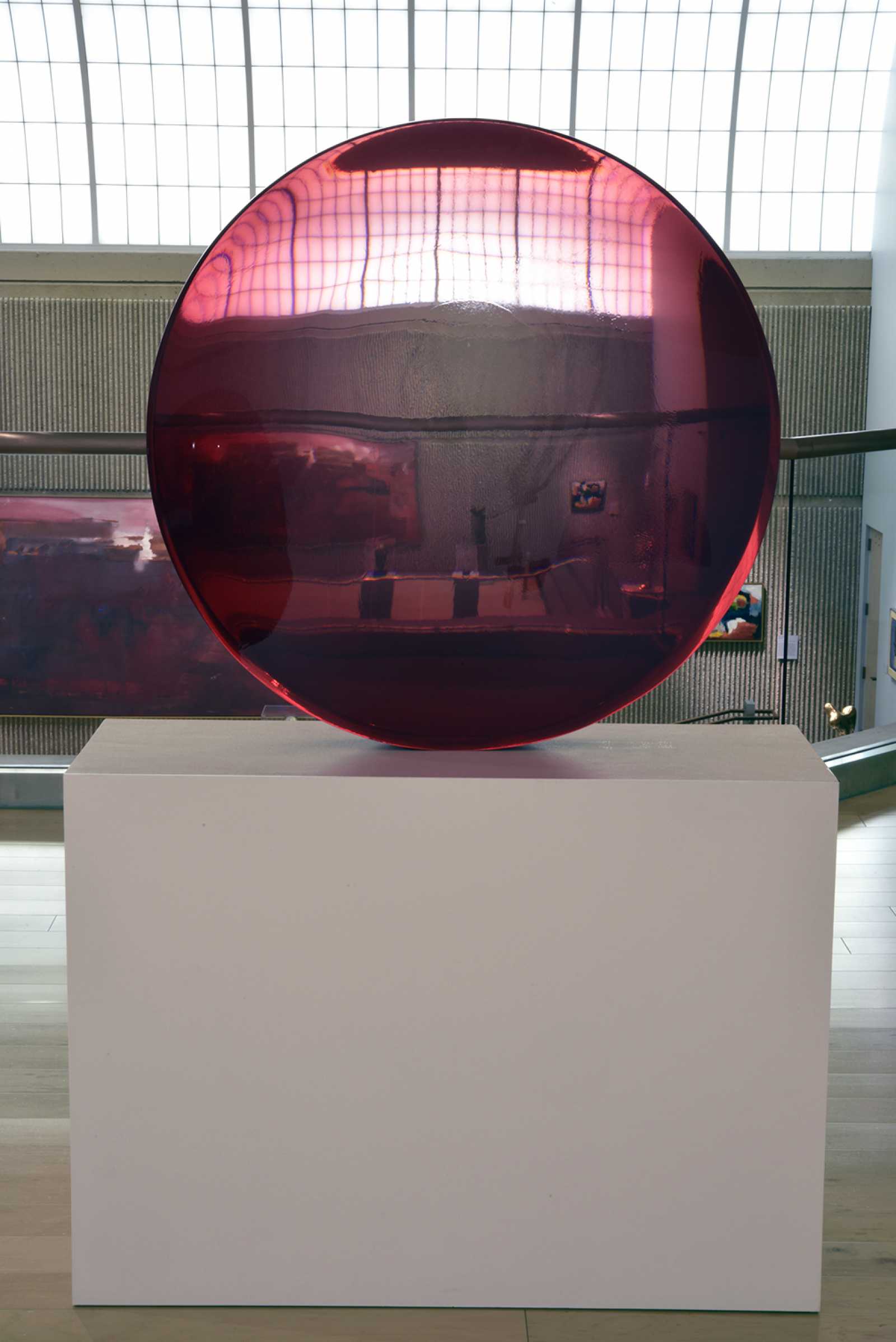Artworks of the Week
Fred Eversley
The works for which Fred Eversley is most known take the form of transparent, monochromatic, concave parabolic lenses with optical properties. Palm Springs Art Museum is fortunate to have three of Eversley’s lens works in its collection—Red Lens; Untitled, a similar lavender lens; and Untitled (Black), a smaller black form. In these works, the curve of the lens refracts the direction of the light in ways that distort and tint what is seen through it.
Trained as an engineer before becoming an artist, Eversley collaborated with NASA and aerospace companies, which influenced his interest in the parabolic lenses that concentrate energy to a single focal point. His work is also influenced by the notion that energy is the common element for all natural and human systems. Eversley was a pioneer in the mid-20th-century Light and Space art movement rooted in Southern California. His use of materials, including plastic, polyester resin, and industrial dyes, reflects the technological advances that define the artistic innovations of the time responsible for creating new forms and augmenting viewers’ perceptions.
Frederick Eversley (American, born 1941), Red Lens, 1983, cast polyester resin, 37 inches diameter, 2 ½ to 4 inches deep. Gift of the Estate of Eugene V. Klein, 62-1992.
Agnes Pelton
Originally from the East Coast, Agnes Pelton arrived in the Palm Springs area in 1932 and settled in the adjacent town of Cathedral City for the remainder of her life. Founding member and short-time participant in the New Mexico Transcendental Painters Group, Pelton became known for her spiritual abstractions. However, throughout her career, she also painted desert landscapes concurrently in a realistic style. Pelton saw these two styles as complementary forms of expression that informed one another, with color the essential means of expression in both modes.
Pelton was a sensitive observer of nature, and she immediately responded to the unique shapes, forms, and light of the desert environment and the mysterious flora that burst into colorful blooms during the winter season. Named for its compact indigo mass of blossoms that resembled puffs of smoke, smoke trees became one of her favorite desert subjects as seen in Smoke Trees in a Draw.
Agnes Pelton (American, born Germany, 1881-1961), Smoke Trees in a Draw, ca. 1950, oil on canvas, 25 x 31 ½ inches. Museum purchase with funds provided by the Western Art Council, Mary James Memorial Fund, 2008, 31-2008.


